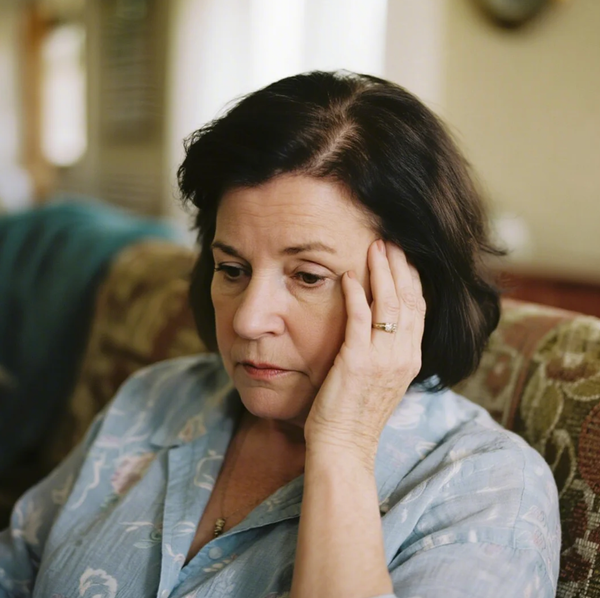Why Can’t I Cry: Understanding The Block And How To Unlock It
A lot of people wonder: why can’t I cry, even when I feel sad? This emotional shut‑down can stem from factors such as trauma, medication, and learned beliefs. Discover common causes, personal stories from others, and steps you can take to encourage tears to flow.

A lot of people wonder: why can’t I cry, even when I feel sad, hurt, or overwhelmed?
This emotional shut‑down can stem from factors such as trauma, depression, medication, and learned beliefs. Discover common causes, personal stories from others, and steps you can take to encourage tears to flow.
😢 Why Crying Is Important
Crying is a natural way to release stress hormones and feel relief.
Somehow, modern societies have shamed themselves out of crying as if signals weakness or "wrongness." Which is unfortunate, seeing as crying can be thought of as the body’s emotional bathroom break.
Experts believe tears send social signals of vulnerability. They can invite comfort and empathy from others and help you heal heal.
Not crying at all (especially in times of emotional distress) may be a sign of underlying repression or suppression, not just “being tough.”
🔍 Common Reasons: Why You Might Not Be Able to Cry
1. Emotional Numbness from Depression or Trauma
Certain forms of depression, like melancholic or anhedonic types, can shut down emotional responses.
You may feel flat, disconnected, or unable to respond to both ends of the emotional spectrum - sadness and joy.
Trauma and chronic stress can also cause numbness, blocking tears. The "freeze" or shutdown response can kick in if attempts to fight or flee the perceived threat are not successful, or not possible.
Past abuse and neglect can teach the body that showing emotion is unsafe. It receives that cue and stops tears from flowing.
2. Suppression Learned in Childhood
If you were shamed or punished for crying as a child, you may have learned to avoid crying altogether.
This becomes an understandable, yet unfortunate, self-protective pattern that may continue into adulthood.
3. Medication Side Effects
Certain medications, especially SSRIs and SNRIs (antidepressants), can cause emotional blunting.
People may report feeling pain or sadness in their mind, but physically they cannot seem to cry.
4. Physical or Medical Issues
Causes of dry eyes such as:
- Sjögren’s syndrome
- Seasonal dryness
- Laser eye surgery
- Certain antihistamines
Can all reduce tear production, even if the emotions are present.
5. Cultural or Gender Norms
Though this can definitely apply to both genders, men are at particular risk if they're taught cliches such as "boys don't cry" and "men can't show weakness" - either directly or indirectly through peer and family relationships.
These beliefs become internalized and make emotional release feel almost impossible.
💬 Real Stories: People Who Can’t Cry
Personal accounts from Reddit. You're not alone!
"Literally any time I'm about to cry, or start welling up, or feel I need to cry my brain just goes: Oh hell no, BYEEEE and I end up numbing and dissociating instead."
“I've recently realized that even if I feel like I need to cry after feeling upset about something, I physically can't. Like I can feel the urge to cry but it's like it's so deep down and small that I can't bring it to the surface.
“My family always told me as a child,"stop cry like a girl". my only crime was to born deeply sensitive guy. So yes, now as an adult I can't cry at all. couple of weeks ago I wanted to cry so much and search guides on the internet how to, of course it's didn't worked."
“I have lost the ability to cry due to the trauma of my family making fun of me and threatening me when I did."
These accounts show that even when people feel internal emotion where crying would be the appropriate response, they literally cannot cry. It feels like their body has shut off.
If anything, it teaches us to show a little more empathy for ourselves.
The environments we're raised in, even if loving at times, can still teach us that emotions are bad and we must do all we can to hide them. This is causing a lot of suffering around the world today.
📋 5 Steps to Reconnect with Your Emotions
If you feel stuck, here are some gentle steps to begin opening the emotional channels again:
1. Explore Emotion-Safe Expression
Use journaling, drawing, or music to explore feelings without putting pressure on yourself to cry. Creative expression can surface emotions in a safe way.
2. Practice Gentle Release
Try tears triggered by happy triggers first, like a movie with a meaningful storyline or emotional music.
Experts suggest starting with “happy tears” so the body learns it’s okay to cry.
3. Mindfulness & Body-Centered Practices
Mind/body techniques can help emotions move through the body
- Somatic therapy
- Breathing exercises
- Gentle yoga help emotions move through the body.
This can help release emotional blocks. But do remember to start slow so you don't get overwhelmed.
4. Talk with a Safe Person or Therapist
Naming feelings to someone you trust is a big step in this process. Particularly if you find it hard to create that dialogue with yourself. Therapists trained in trauma help people to unpack emotion blocks over time. There can often be multiple layers of anger, grief, and guilt or shame.
5. Slow Exposure to Sadness
Create rituals like lighting a candle, visiting a place that's special to you, or writing letters you don’t send. These are lower pressure, open pathways for emotion without forcing tears.
⚠️ When to Seek Professional Help
Consider professional support if:
- Trauma from your past feels stuck
- You frequently feel empty, flat, or detached
- Medication has blunted your emotional range
- You have trouble processing real sorrow or distress
- You feel isolated by not reacting being able to show emotions in relationships
Therapists specializing in trauma, CPTSD, somatic therapy, or emotional regulation can offer gentle guidance to reconnect with tears when you're ready.
✅ Final Thoughts
Just like crying isn’t a weakness (despite what some segments of society try to insist), NOT being able to cry isn't a weakness either.
Not to say it isn't frustrating, of course, when you want relief/a release.
But beginning to thaw blocked emotions often has to start with safety and acknowledgement that the resistance to crying is a form of self-defence and protection. It takes patience to build trust that it can start to loosen the reins a bit.
Tears may feel unsafe or impossible. But with small, consistent steps, true emotional release can begin.
Need some 1:1 help to process emotions in a safe environment? Subscribe to a plan at SuppressedEmotions.com.
Written by Declan Davey - Health Writer & Psychotherapist





